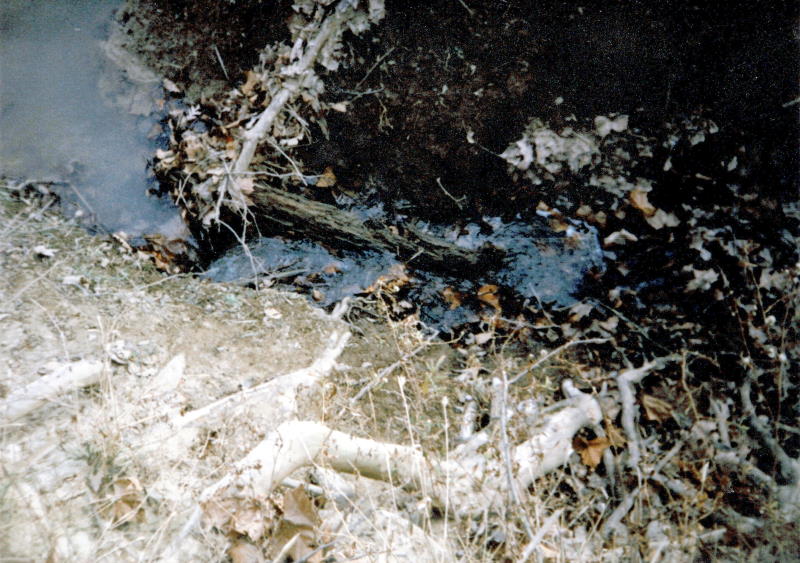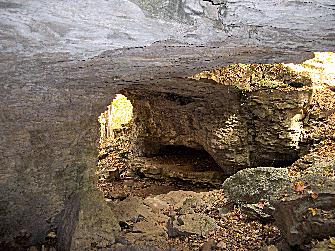Other Karst Features
 There are many significant karst features besides caves, sinkholes and springs. These include:
There are many significant karst features besides caves, sinkholes and springs. These include:
- Karst Windows - collapse openings into existing cave passage
- Karst Valleys - distal dry valleys which carry storm waters only and have karst features in their floors
- Gulfs - large karst windows with steep sides and an alluviated floor
- Sinks - locations where surface streams lose water into subterranean passages (also known as swallow-holes), and
- Natural Bridges (rare).
 The above image is an example of a small swallow-hole. A stream is flowing from left to right, quietly entering a subterranean passage. Often, a whole series of these swallow-holes will be present in the stream bed. During times of flood, upstream swallow-holes are inundated with flood waters and the stream will terminate in another swallow-hole further down the dry-bed. This particular swallow-hole is in Tincher Hollow, and is representative of karst valley features found through much of the Crawford Upland.
The above image is an example of a small swallow-hole. A stream is flowing from left to right, quietly entering a subterranean passage. Often, a whole series of these swallow-holes will be present in the stream bed. During times of flood, upstream swallow-holes are inundated with flood waters and the stream will terminate in another swallow-hole further down the dry-bed. This particular swallow-hole is in Tincher Hollow, and is representative of karst valley features found through much of the Crawford Upland.
The karst feature shown at left is near the retreating mouth of a cave spring. Ceiling collapse at two locations has formed adjacent karst windows, with the original cave ceiling between them being left as natural bridges. Twin Bridges is downstream of Wolf Cave in Owen County, at the northern extremity of Trail 5 in McCormick's Creek State Park. Although rather interesting geologically, Wolf Cave consists of a single passage only 240 ft long.